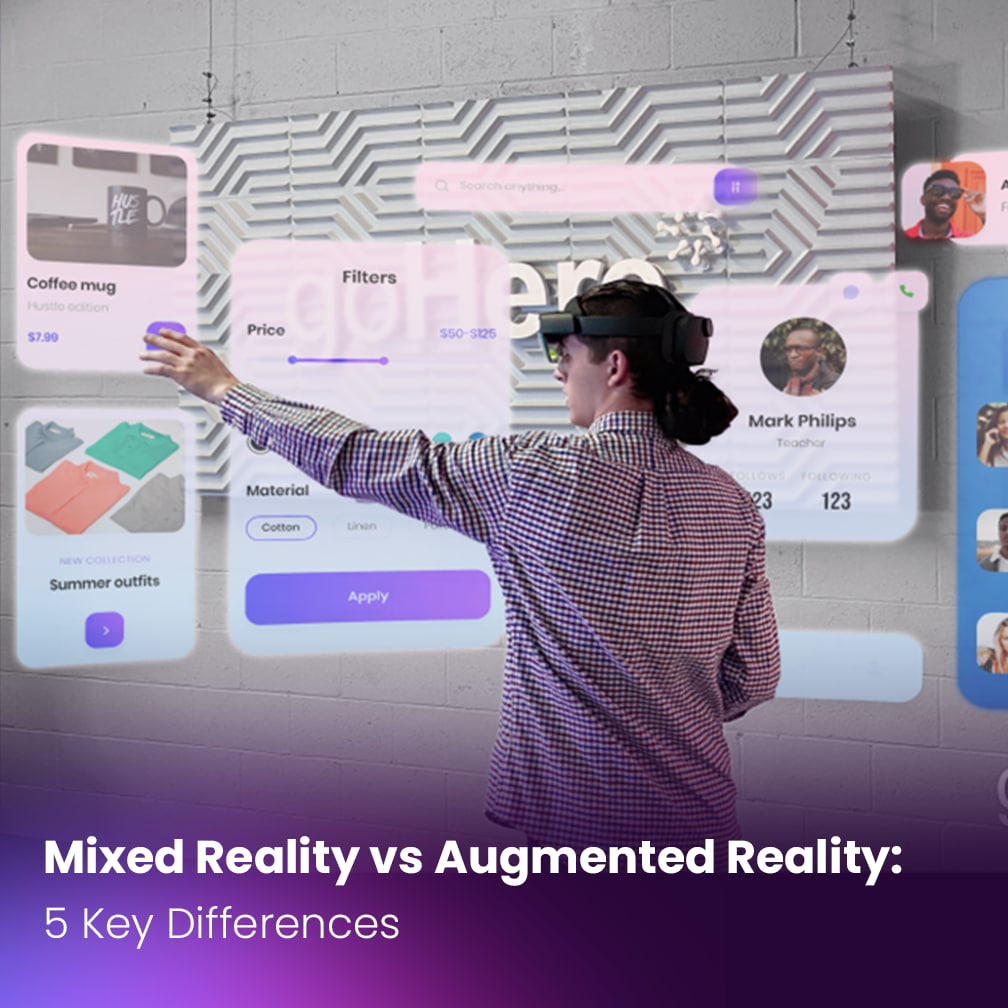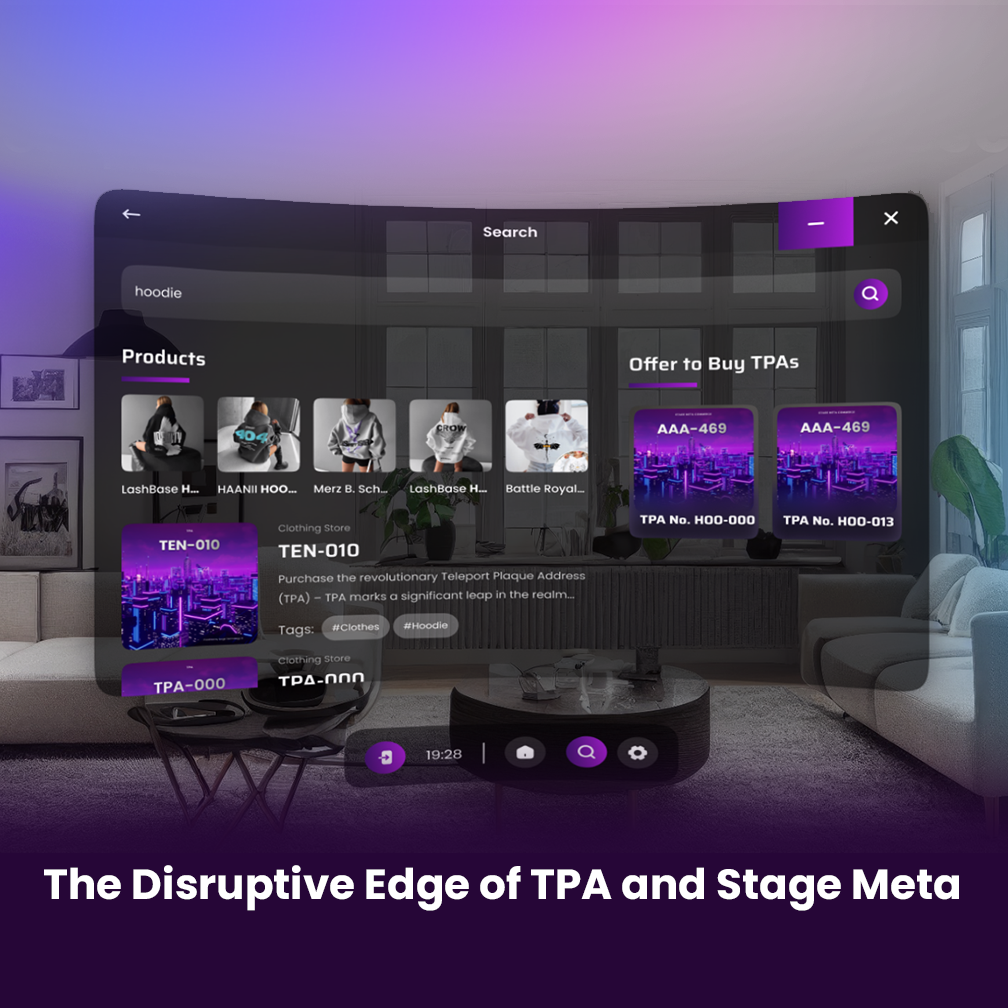Spatial Computing: A Timeline of Market Expansion and Future Potential

Spatial Computing, particularly Augmented Reality (AR) and Virtual Reality (VR), has experienced an extraordinary rise in adoption and innovation, transforming industries and consumer experiences. From its inception to current applications, these technologies have evolved significantly, with Stage Meta leading the charge in developing immersive experiences.
Below is an overview of the AR/VR market’s growth over time and its projected trajectory.

Early Development (Pre-2000s)
- Initial Innovations: VR made its first appearance in the 1960s with early concepts like the “Sensorama” and military flight simulators. AR research began in the 1990s, but both technologies remained largely experimental and inaccessible to the public.
- Focus on Research & Development: AR and VR were primarily used in military, aerospace, and academic environments for training and simulation, but the technology was far from being consumer ready.

2000s – 2010s: First Wave of Commercialization
- Early VR Efforts: Products like the Nintendo Virtual Boy (1995) and early VR headsets in the 2000s struggled due to high costs and limited capabilities, preventing mainstream success.
- Technological Advancements and AR Emergence: The rise of smartphones in the 2000s created the foundation for AR’s growth, with apps like Layar (2009) and the public introduction of Google Glass (2013), bringing AR to wider audiences.
- Oculus Rift Revolution: Oculus Rift’s crowdfunded launch in 2012 marked a turning point for VR, demonstrating the potential for immersive experiences. Facebook’s acquisition of Oculus in 2014 cemented VR’s role in entertainment.
- Broader Consumer Interest: The AR phenomenon Pokémon Go (2016) introduced millions to augmented reality, setting the stage for widespread adoption.

2010s – Present: Accelerated Growth and Expanding Applications
- Rapid Innovation: AR/VR adoption soared in industries like gaming, healthcare, and real estate. Ecosystems such as Microsoft HoloLens (2016) expanded AR applications into enterprise settings.
- Industry Adoption: Sectors such as aerospace, healthcare, and manufacturing embraced Spatial Computing for simulation-based training. Real estate and retail also began utilizing virtual walkthroughs and AR-enhanced shopping experiences.
- 5G & Cloud Computing: The integration of 5G networks and cloud computing bolstered AR/VR by reducing latency and enabling more powerful real-time interactions, enhancing Stage Meta’s immersive ecosystem.
Key Growth Drivers
- Hardware Advancements: The development of standalone AR/VR Ecosystems, offering improved mobility, comfort, and affordability, has made widespread adoption easier.
- Content Ecosystem: A growing library of AR/VR apps, games, and productivity tools continues to fuel the expansion of Spatial Computing.
- Enterprise Applications: Industries such as healthcare, automotive, construction, and retail are heavily investing in AR/VR for training, customer engagement, and maintenance tasks.

Revolutionizing Business Through Spatial Computing
Stage Meta is a pioneering and exclusive Ecosystem in Spatial Computing, empowering businesses across industries such as hospitality, real estate, retail, automotive, and more to build unique, immersive business presences. With Stage Meta, businesses are unlocking new ways to engage customers through fully immersive environments that blur the line between the physical and digital worlds.
In addition, Stage Meta enables users to explore and experience immersive environments while benefiting from the ecosystem’s economy by becoming members and accessing its various advantages.
Stage Meta’s objectives align with Stage Technology Inc.’s mission:
- Empowering Users: Stage Meta offers a dynamic space where users can buy, sell, trade, and activate TPAs, simplifying navigation and interaction within spatial environments.
- Revolutionizing Interaction: Both Stage Meta and TPAs aim to transform how people experience the digital and physical world by seamlessly integrating the two for a fully immersive experience.
- Universal Adoption: Stage Meta showcases the potential of TPAs, while Stage Technology Inc. provides APIs that integrate TPAs across various applications, aiming to make TPAs the standard in Spatial Computing.

Future Outlook for Spatial Computing
- Mixed Reality (MR): The integration of AR and VR into Mixed Reality is expected to further transform industries like real estate, hospitality, entertainment, and retail. By incorporating immersive technologies, companies can offer virtual property tours, interactive hotel experiences, and dynamic entertainment events, allowing customers to engage in lifelike interactions from anywhere. Stage Meta plays a key role in leading this seamless transition.
- Real Estate and Hospitality: Spatial Computing will reshape how customers explore properties and travel experiences. In real estate, virtual property tours will allow potential buyers to explore homes remotely. Meanwhile, the hospitality industry will utilize AR/VR to offer immersive hotel tours and personalized experiences, improving customer engagement and streamlining booking processes.
- Entertainment and Retail: In the entertainment industry, virtual concerts and interactive events will attract global audiences in real time, while retailers will employ AR to offer virtual try-ons and immersive shopping experiences, merging the digital and physical shopping realms to enhance customer satisfaction and increase sales.
- 5G & Cloud Computing: The rollout of 5G and advancements in cloud computing will continue to drive the adoption of Spatial Computing in these industries, enabling real-time interaction and seamless immersive experiences across all sectors.
This Ecosystem is not just a tool for Spatial Computing; it represents a shift towards a more interconnected and immersive digital future. Stage Meta is setting new standards in the industry, enabling businesses to explore and thrive in the era of Spatial Computing while opening a world of possibilities for innovation and growth.
Conclusion
As Spatial Computing continues to evolve, AR and VR are becoming indispensable tools for both businesses and consumers. Ecosystems like Stage Meta are at the forefront of this transformation, creating a future where immersive experiences and the Stage Meta ecosystem become central to the digital landscape.
With these advancements, industries are stepping into a new era of unprecedented immersion, allowing businesses to connect with audiences in more meaningful and interactive ways. The AR/VR market is poised for exponential growth in the coming years, shaping the future of digital experiences.








